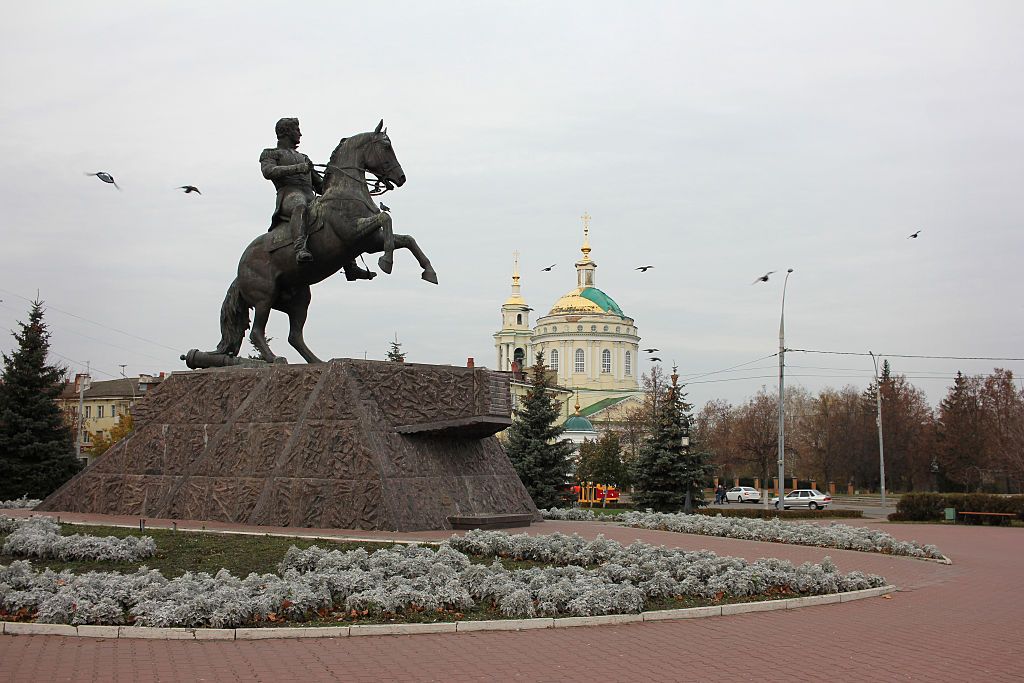The blockade ended at 10:30 p.m. local time. Truck traffic in both directions is now moving as usual, according to Ukraine's State Border Guard's statement.
Russia seems to be preparing a significant offensive in Ukraine as it is moving troops toward key positions on the front, the Financial Times reported on May 13, citing undisclosed Ukrainian intelligence officials.
President Volodymyr Zelensky said he will meet with Turkish President Recep Tayyip Erdogan in Ankara, but said both leaders are ready to fly to Istanbul if Russian President Vladimir Putin chooses to attend the talks there.
The number includes 1,240 casualties that Russian forces suffered over the past day.
Andriy Yermak, Zelensky's chief of staff, said that the new pontiff had a phone call with Zelensky on Monday, during which the pope expressed willingness to facilitate meetings between global leaders and vowed to support efforts for "a just and lasting peace."
"Contrary to Kremlin narratives, time is not on Russia’s side," reads a new report from the Stockholm Institute of Transition Economics (SITE).
In an interview with French broadcaster TF1 on May 13, Macron discussed new Russia sanctions and stationing French nuclear weapons in other European countries as a deterrent against Russia.
Performing their song "Bird of Pray," Ukrainian band Ziferblat passed the Eurovision semi-finals on May 13, qualifying Ukraine for the grand final on May 17.
Kremlin spokesperson Dmitry Peskov confirmed that a Russian delegation will be in Istanbul on May 15 for direct peace talks with Ukraine. Foreign Minister Sergey Lavrov and Putin’s foreign policy aide Yuri Ushakov will likely represent Russia.
The move follows Ukraine's ratification of the minerals agreement, deepening U.S.-Ukraine economic ties and signaling expanded U.S. involvement in Ukraine's long-term recovery.
"Ukraine has initiated a coordinated campaign to vilify Hungary in order to undermine our initiative to hold a poll on (Kyiv's) EU membership," Hungarian Prime Minister Viktor Orban said.
"Our people are going to be going there," U.S. President Donald Trump said.
Updated: Ukrainian drone strikes Russian early-warning radar, traveling record-breaking 1,800 kilometers

Editor's note: The article was updated with information gained from the satellite imagery, which was taken by Planet Labs and shared by Radio Free Europe/Radio Liberty's Schemes project later on May 27.
A long-range drone operated by Ukraine's military intelligence (HUR) attacked early-warning Voronezh M radar in Russia's Orsk city in Orenburg Oblast on May 26, a source in the agency told the Kyiv Independent on May 27.
For the first time since the start of the full-scale invasion, Ukraine attacked facilities in Orsk, some 1,800 kilometers (around 1,200 miles) from the drone's launch location, according to the source.
Russian media claimed on May 26 that a drone fell in the Orsk suburbs in the Novoorsk district, allegedly targeting a military facility. No damages or casualties were reported.
The military intelligence source told the Kyiv Independent that the consequences of the May 26 attack are still being clarified.
Later during the day, Radio Free Europe/Radio Liberty's Schemes project published satellite imagery of the radar system after the attack.
While the low resolution of the footage does not allow to accurately assess the extent of the damage, dark spots visible on May 27 – possibly traces of fire caused by the drone strike – seem to confirm the attack.
🛰️Наслідки удару безпілотників ГУР по російській РЛС за 1800 км від кордону - супутникові фото
— Схеми (@cxemu) May 27, 2024
Джерело «Схем» (Радіо Свобода) у Головному управлінні розвідки МО України підтвердило, що в ніч на 27 травня безпілотники відомства атакували (РЛС) Воронеж-М в Оренбурзькій області РФ. pic.twitter.com/Fl2o1Zbeha
Ukraine's military intelligence also struck another Voronezh radar in the village of Glubokii in Krasnodar Krai on May 23, causing a fire at the facility, according to the source.
Voronezh radar is an early-warning equipment that provides long-distance airspace monitoring, focusing on ballistic missile attacks and aircraft. Its operational range is up to 6,000 kilometers (around 3,700 miles).
In early May, another Ukrainian long-range drone hit an oil refinery, Gazprom Neftekhim Salavat, in Russia's Republic of Bashkortostan.
The drone, operated by the State Security Service (SBU), covered 1,500 kilometers (around 930 miles) to strike the target, a record-breaking distance for Ukraine at the time.
In April, Ukraine hit production facilities in Russia's Tatarstan Republic, 1,300 kilometers (800 miles) from the state border.

Most Popular

After 3 years of full-scale war in Ukraine, Europe announces plan to ban all Russian gas imports

Journalist Roshchyna's body missing organs after Russian captivity, investigation says

Ukrainian sea drone downs Russian fighter jet in 'world-first' strike, intelligence says

Ukraine is sending the war back to Russia — just in time for Victory Day

Kremlin says Russia ready for mass mobilization like in WWII 'at any moment'
Editors' Picks

How medics of Ukraine’s 3rd Assault Brigade deal with horrors of drone warfare

As Russia trains abducted children for war, Ukraine fights uphill battle to bring them home

'I just hate the Russians' — Kyiv district recovers from drone strike as ceasefire remains elusive



